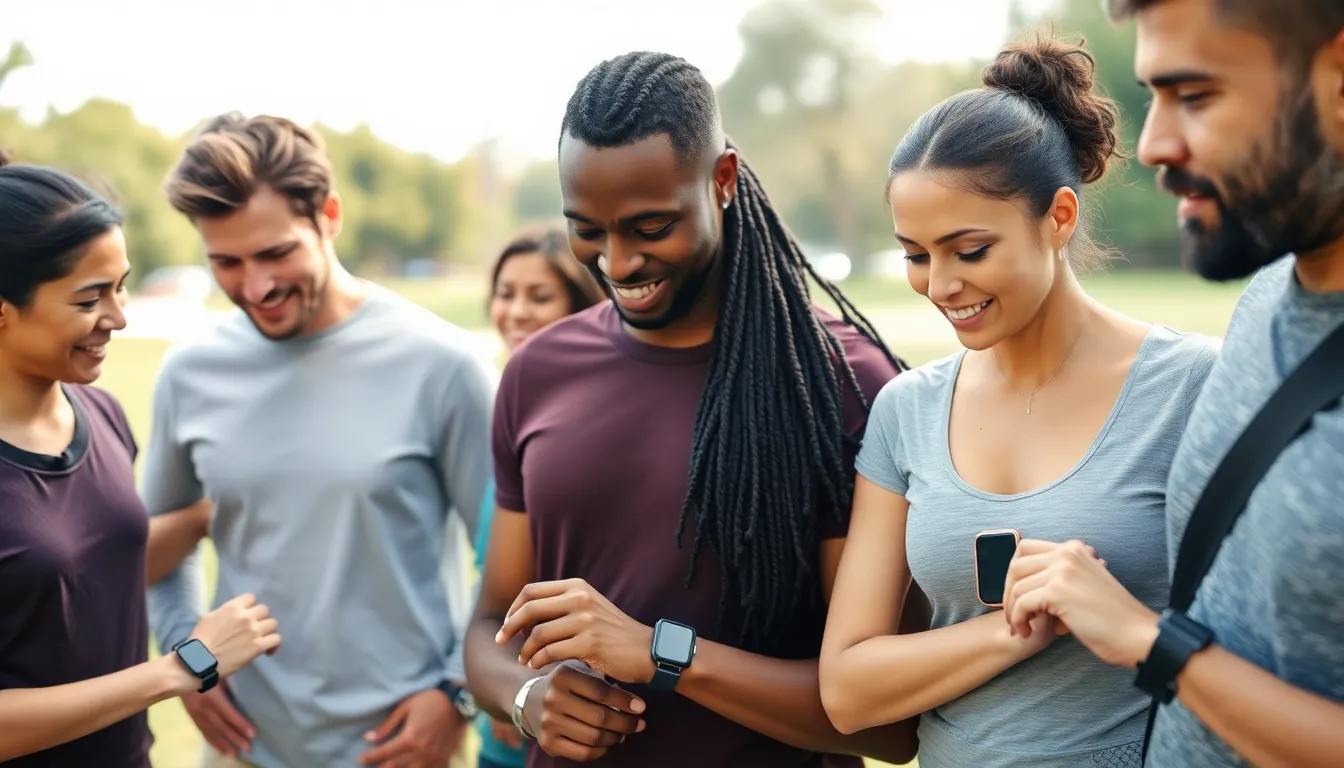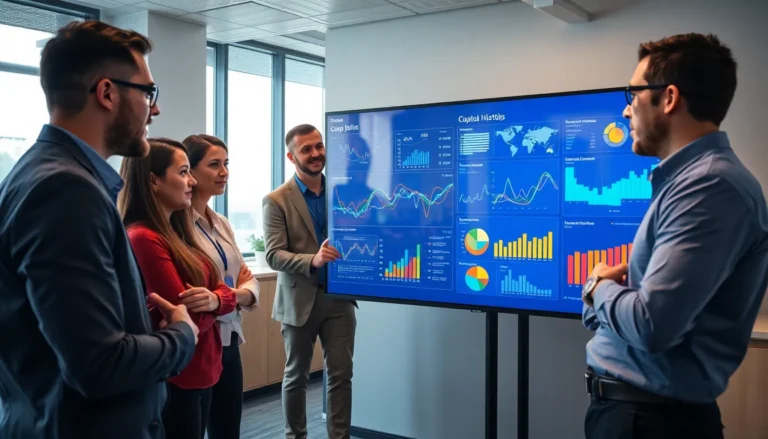In a world where biology meets technology, bio-digital trends are rewriting the rules of innovation. Imagine a future where your smartwatch not only tracks your steps but also monitors your mood and suggests a playlist to boost your spirits. Sounds like sci-fi? Welcome to today’s reality, where the fusion of living systems and digital advancements is transforming everything from healthcare to environmental sustainability.
These trends aren’t just for tech enthusiasts or science geeks; they’re for anyone who wants to stay ahead of the curve. As bio-digital solutions reshape industries, they offer exciting opportunities for businesses and individuals alike. So, buckle up and get ready to explore the quirky yet fascinating world of bio-digital trends that promise to make life smarter, healthier, and just a tad more fun.
Table of Contents
ToggleOverview of Bio-Digital Trends
Bio-digital trends combine biology and digital technology to create innovative solutions. These trends enhance health monitoring and improve everyday life significantly. For instance, smartwatches not only track physical activity but also analyze emotional well-being. Wearables utilize advanced algorithms to offer personalized health suggestions.
Artificial intelligence plays a crucial role in these developments. Algorithms process extensive health data to identify patterns and suggest interventions. Businesses are leveraging these insights to develop targeted wellness programs.
Further, biotechnology advancements support these trends. Gene editing techniques enable precise modifications for improved health outcomes. Researchers explore these methods to personalize treatments for various diseases.
Sustainability constitutes another important aspect. Bio-digital solutions aim to optimize resource management through data analysis. Smart agricultural technologies monitor soil health and water usage more effectively.
Community engagement enhances the impact of bio-digital trends. Educational platforms share knowledge about health technologies, fostering a more informed public. As adoption increases, more individuals can access tools for better health decisions.
Overall, the merging of biological insights and digital capabilities fosters a transformative approach to health and wellness. These trends provide paths to improved quality of life, reflecting the evolving intersection of technology and human biology.
Key Technologies Driving Bio-Digital Trends

Innovative technologies significantly drive bio-digital trends by merging biology and digital resources. This integration enhances health monitoring and decision-making processes.
Artificial Intelligence in Biotechnology
AI enhances biotechnology through data analysis and pattern recognition. It processes large datasets from genetic information to predict health outcomes. Companies utilize AI to develop personalized treatment plans, making healthcare more efficient. Disease prevention strategies benefit from AI’s ability to identify at-risk individuals based on genetic markers. Additionally, machine learning algorithms contribute to drug discovery by predicting the efficacy of compounds. Biotechnologists widely embrace these tools for their potential to transform healthcare delivery.
The Role of Wearable Technology
Wearable technology plays a vital role in bio-digital trends by providing real-time health monitoring. Devices like smartwatches and fitness trackers collect data on heart rates, sleep patterns, and physical activity. Users gain insights into their overall health, enabling proactive management. Advanced analytics in wearables offer personalized feedback for improved lifestyle choices. Furthermore, these devices foster a more connected experience by syncing with health applications, streamlining personal health data. The accessibility of wearable technology motivates individuals to take charge of their wellness journey.
Applications of Bio-Digital Trends
Bio-digital trends encompass various applications that significantly impact health, wellness, and the environment. These advancements harness technology to create innovative solutions in multiple domains.
Healthcare Innovations
Innovative healthcare solutions result from integrating bio-digital trends. Wearable devices revolutionize patient monitoring, providing real-time data on vital signs. Smart health applications analyze this data, offering personalized treatment recommendations. Enhanced diagnostics arise from AI algorithms that assess genetic information, helping identify diseases early. As a result, healthcare practitioners can devise targeted interventions that improve patient outcomes. Telemedicine platforms further streamline access to medical advice, connecting patients with experts remotely. This fusion of technology and biology fosters preventive care, enabling individuals to take charge of their health.
Environmental Sustainability
Bio-digital trends also play a critical role in promoting environmental sustainability. Smart agricultural technologies monitor soil health and optimize water usage with precision. These innovations reduce resource waste while enhancing crop yield. Drones equipped with sensors collect valuable data on land conditions, contributing to smarter farming practices. As a result, farmers make informed decisions that benefit both the environment and their productivity. Data analysis drives conservation efforts, allowing for efficient management of natural resources. Ultimately, these applications pave the way for a sustainable future, harmonizing technology and ecology.
Challenges and Ethical Considerations
Emerging bio-digital trends present several challenges and ethical considerations that stakeholders must address.
Data Privacy Concerns
Data privacy represents a significant challenge. Wearable devices collect extensive personal health information, raising questions about who accesses this data and how it’s used. Health apps that analyze sensitive data may inadvertently expose users to risks if proper security measures aren’t in place. Compliance with regulations such as HIPAA remains vital for protecting patient information. Additionally, users often lack clarity on what data is shared with third parties. Transparency in data handling becomes essential to build trust and ensure responsible use of health information.
Accessibility Issues
Accessibility plays a crucial role in the effectiveness of bio-digital solutions. Not all individuals possess the means to acquire advanced wearable technology. Socioeconomic disparities limit access for certain populations, impacting their engagement in health monitoring and management. Educational resources must accompany technology to ensure individuals understand its use and benefits. Consequently, companies should prioritize inclusivity when developing bio-digital products. Collaboration with community organizations can enhance outreach and create opportunities for a wider audience.
Future Outlook on Bio-Digital Trends
Bio-digital trends are projected to shape healthcare and environmental sustainability dramatically. In healthcare, wearable technology advancements will extend beyond physical metrics. Continuous monitoring may lead to real-time data-sharing between patients and healthcare providers, improving personalized care. Robust AI algorithms will enable better predictive models for disease management, potentially transforming treatment protocols.
The integration of biotechnology into agriculture provides compelling implications for food security. Smart agricultural practices will evolve, leading to higher yield efficiency through data-driven resource management. Drones and IoT devices will gather essential data from crops, allowing farmers to respond swiftly to environmental changes. Enhanced soil monitoring systems can aid in less resource-intensive farming methods.
Customization is set to rise in bio-digital applications. Users’ health data will help tailor wellness programs that specifically address individual needs. This trend highlights the importance of data analysis in developing quick, accurate health insights. Engaging communities through educational platforms will enhance awareness and utilization of these technologies.
Ethical considerations will persist, particularly concerning data privacy and accessibility. Compliance with data protection regulations must prioritize patient confidentiality to address concerns surrounding personal health information. The necessity for accessible technology will grow, as underserved populations may face barriers in adopting bio-digital solutions.
Partnerships with community organizations will play a crucial role in bridging these gaps. Through collaboration, these organizations can foster outreach initiatives that promote bio-digital literacy. Increased awareness may lead to broader acceptance, allowing more individuals to reap the benefits of bio-digital innovations. The future of bio-digital trends offers solutions that redefine health management and ecological sustainability.
Bio-digital trends are reshaping the landscape of health and sustainability. The integration of technology with biological insights offers unprecedented opportunities for enhancing well-being and environmental stewardship. As wearable devices and AI-driven solutions become more prevalent, individuals gain access to personalized health management tools that empower proactive decision-making.
The potential for smarter agricultural practices and improved resource management reflects a commitment to sustainability that benefits both people and the planet. However, addressing ethical concerns and ensuring equitable access to these innovations will be crucial for maximizing their impact. By fostering community engagement and collaboration, society can harness the full potential of bio-digital advancements, paving the way for a healthier and more sustainable future.









